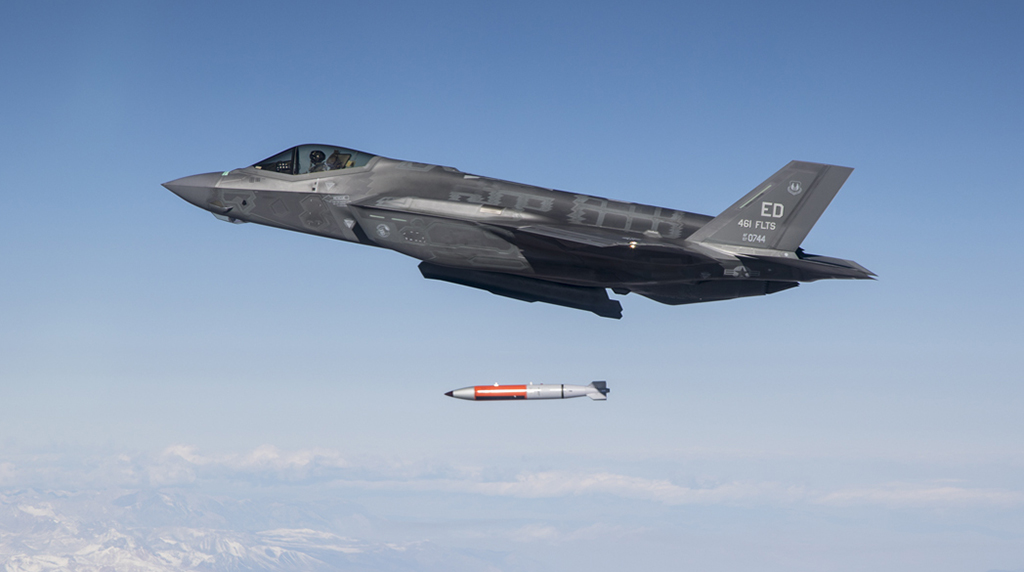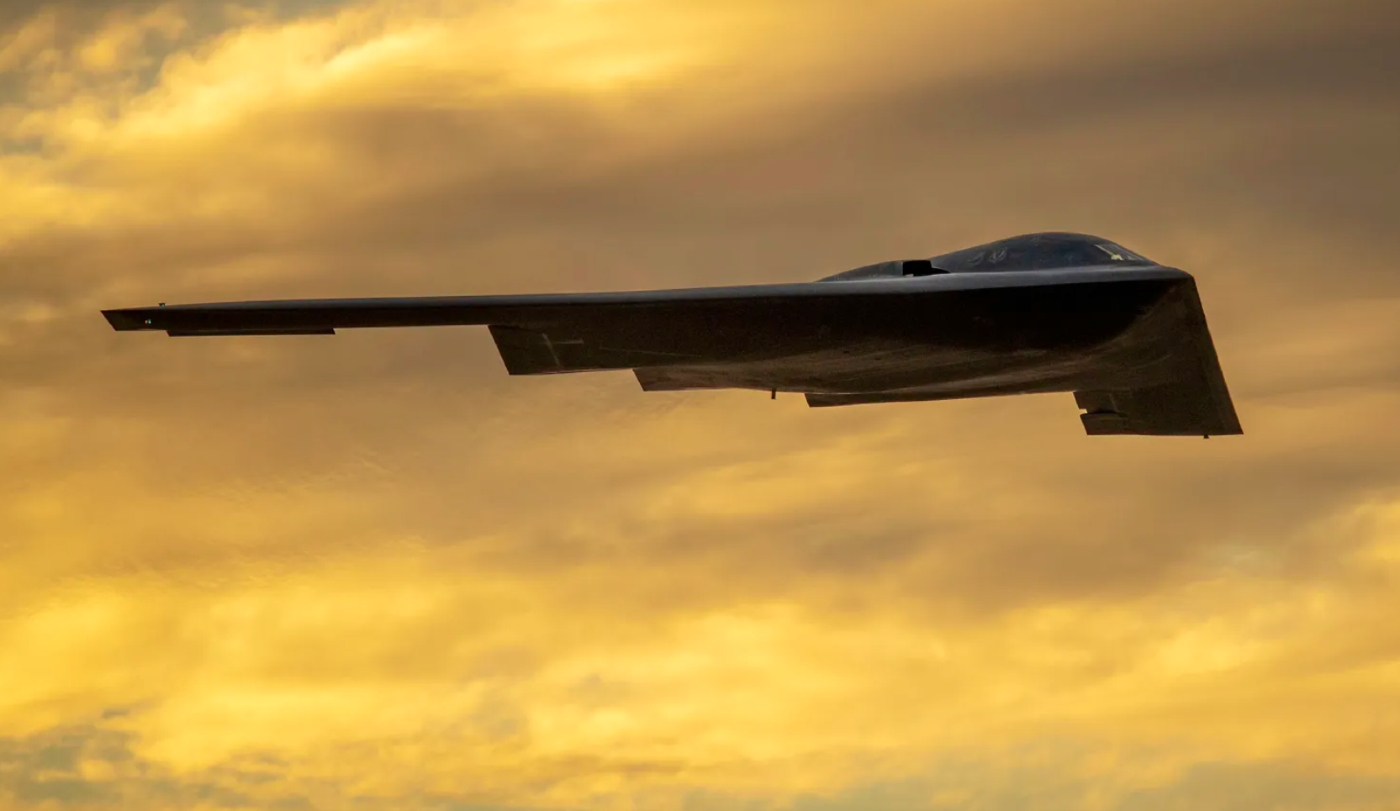In a first, the B61-12 nuclear bomb has officially become a part of the US nuclear stockpile and approved for use on the B-2A Spirit stealth bomber, making it the first aircraft in the US Air Force (USAF) inventory to be equipped with the lethal weapon.
The National Nuclear Security Administration’s (NNSA) new unclassified Stockpile Stewardship and Management Plan (SSMP) 2024 report published on November 27 contained this information. The NNSA, together with the US military, manages the country’s nuclear stockpile.
Some of the US stockpile’s oldest nuclear weapons are from the B61 family. Reports from over the years have suggested that the latest B61-12 bomb will eventually replace the older variants, including the B61-3, -4, and -7. However, a timeline for that remains elusive for now.
The first B61-12 production run was finished in late 2021, and the weapons were initially supplied to the US military in 2022. The B61-12 program, essentially a life-extension initiative started by the Obama administration, is expected to conclude in 2025. The maximum yield of the B61-12 is reportedly 50 kilotons.
The B61-12 is an 825-pound, 12-foot-long bomb with an inertial navigation system (INS) guidance package. It comprises both new parts — such as the precision guiding tail kit and reconditioned components, all of which have varying yields — from the previous B61 variants.
As per previously available information, the missile is fitted with one of the most adaptable warheads in the US arsenal, allowing it to be used as a low- or medium-yield weapon by adjusting its explosive strength to suit the target. It also features miniature rockets at the back of the body that rotate the bomb to stabilize it.
The B61-12 is also undergoing certification for use by the US Air Force’s F-35A Joint Strike Fighters, F-15E Strike Eagles, and F-16C/D Vipers, as well as the service’s upcoming B-21A Raider stealth bombers.
Additionally, as part of the NATO alliance’s nuclear sharing agreements, Germany’s swing-wing Tornado combat jets and some NATO F-16s and F-35s will also be authorized to use these missiles.

The integration of the bomb on the B-2 Spirit bomber is significant due to its stealth characteristics, which are expected to allow the bomber to get past enemy air defenses and conduct the planned strike. Being one of the most resilient aircraft in the world, the B-2 stealth bomber is an essential part of the USAF’s long-range strike capability.
The B61-12 has been undergoing flight testing on the B-2 and other aircraft for many years. The NNSA declared in 2018 that it had finished the first round of end-to-end qualification flight tests on the B-2 while the bomb was still being developed.
The B6-2’s nuclear armament options still include the B61-7, B61-11, and B83-1 bombs, according to the NNSA’s most recent SSMP report. The Spirit is the only aircraft authorized to use any of these bombs.

It is not known when the B61-12 will be cleared for use with the F-35, F-15, F-16, or any other NATO aircraft. The B61-12 on the F-15E and F-35A has already received the first certification, as NNSA and the US Air Force revealed.
Just earlier this month, the Royal Netherlands Air Force announced that its F-35A stealth fighter jet was to be certified as a “Dual Capable Aircraft (DCA)” by January 2024 with the capability to carry the B61-12 nuclear bomb.
The B61-12 has been made combat-ready at a time when the US is bolstering its nuclear strike capabilities to counter the challenge from adversaries like Russia, China, Iran, and North Korea, which pose a stated threat to Washington and its partners and allies.
Moreover, integrating the B61-12 on B-2 Spirit comes days after the Biden administration announced the development of a more advanced B61 variant.
US Is Already Developing B61-13 Nuclear Bomb
The US military announced its plans for the B61-13 on October 28, stating that “Congressional authorization and appropriation” would be necessary to develop the weapon.
“The B61-13 would take advantage of the current, established production capabilities supporting the B61-12 and would include the modern safety, security, and accuracy features of the B61-12,” the Pentagon said in a press release.
The decision is a direct outcome of the 2022 Nuclear Posture Review results, according to a Pentagon fact sheet released after the announcement, and it is intended to give the US “additional options against certain harder and large-area military targets.” The primary purpose of nuclear weapons, according to the NPR in 2022, is to “deter nuclear attack on the United States, our Allies, and partners.”
According to a Pentagon fact sheet released after the announcement, the action is intended to give the US “additional options against certain harder and large-area military targets.” It is a direct response to the 2022 Nuclear Posture Review results. One 2022 NPR noted that “the primary purpose of nuclear weapons is to prevent nuclear assault against the United States, our allies, and our partners.”

The B61-13 would be deliverable by contemporary aircraft, enhancing adversary deterrence and ensuring the safety of friends and partners by giving the President more options against specific, more complex, and wide-ranging military targets. The B61-13 “will have a yield similar to the B61-7, which is higher than that of the B61-12,” the factsheet states. It will also possess the B61-12’s contemporary safety, security, and accuracy features.
Moreover, a separate fact sheet the Pentagon released said, “The B61-13 will provide the President with additional options against certain harder and large-area military targets, even while the Department works to retire legacy systems such as the B83-1 and the B61-7.”
The decision to build a new high-yield bomb seems to be directly influenced by the construction of facilities taking place in rival countries that are also simultaneously bolstering the inventory of their nuclear weapons, including building underground command and control facilities in China and Russia.
The entire quantity of B61-12s and B61-13s that the US military hopes to obtain through this new course of action is not public knowledge. The B61-13s, however, remain years away from being fielded, and the B61-12 has entered the force and is now ready for combat.
- Contact the author at sakshi.tiwari9555 (at) gmail.com
- Follow EurAsian Times on Google News




